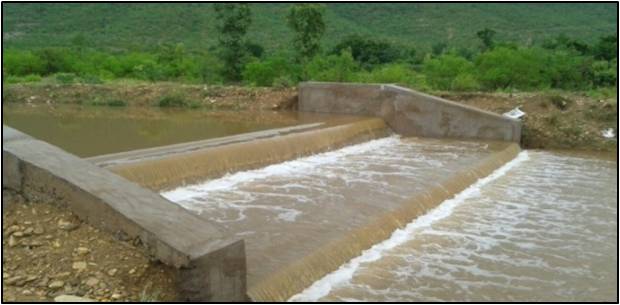Watershed Development Component of PMKSY
1. Introduction
The Department implemented a Centrally Sponsored Scheme (CSS) ‘Integrated Watershed Management Programme’ (IWMP) since 2009-10, which was amalgamated as the Watershed Development Component of PMKSY (WDC-PMKSY) in 2015-16. The Government of India approved the continuation of WDC-PMKSY on 15.12.2021 as ‘WDC-PMKSY 2.0’ for the project period of 2021-2026 with a physical target of 49.50 lakh ha and indicative Central financial outlay of Rs. 8,134 crore.
The unit cost of projects has been revised upward from Rs 12,000/ha to Rs 22,000/ha for plain areas, and Rs 15,000/ha to Rs 28,000/ha for the hilly & difficult areas and upto Rs.28,000/ha for IAP & LWE areas. The funding pattern between Central and State is in the ratio of 60:40 except for the hilly States & NE States including Sikkim for which it is 90:10. For UTs, the funding pattern is 100% Central share. The project period has been reduced from existing 4 – 7 years to 3 – 5 years.

The Guidelines for New Generation Watershed Development Projects (WDC-PMKSY 2.0) envisage treatment of watersheds on saturation basis. Accordingly, any cost, over and above the prescribed project cost norm, may be arranged by the State/UT Government. States/UTs may therefore consider effective convergence with relevant Central and State schemes to ensure the development of watershed project areas on saturation basis.
On the recommendations of NITI Aayog, rejuvenation of Springshed has been incorporated as a new activity in the WDC-PMKSY 2.0 within the approved cost. Till date DoLR has sanctioned projects to States/UTs for the entire allocated project cost under the WDC-PMKSY 2.0.
.
2. Objective
Objectives of watershed development projects are to improve productive potential of rainfed / degraded land through integrated watershed management; to strengthen community based local institutions for promotion of livelihoods & watershed sustainability, and to improve the efficiency of watershed projects through cross learning and incentive mechanism.
3.Next Generation Watershed Development Projects – Shift in Approach
- Emphasis on effective use of rain water – relying more on water productivity.
- Transition from predominantly mechanical/engineering treatments towards more of biological measures.
- Diligent planning for crop systems diversification for risk management; enhancing productivity and opting for crop alignment as a principle.
- Diversification of the watershed economy by adopting Integrated Farming Systems (IFS) with horticulture, afforestation, fisheries, animal husbandry, apiculture, sericulture etc.
- Adaptation and mitigation of adverse impacts of climate variability & change.
- Economically vibrant institutions, like FPOs, to promote agri-business services and impart efficiency to transactions.
- Ecology, Economy and Equity.
- Focus on decentralization, flexibility, community empowerment in the planning process to accommodate local, social and traditional strengths.
- Rejuvenation of springs by taking up comprehensive treatment of springsheds as an activity under watershed development projects.
- Knowledge partnership with National level reputed institutions for capacity building and innovations.

